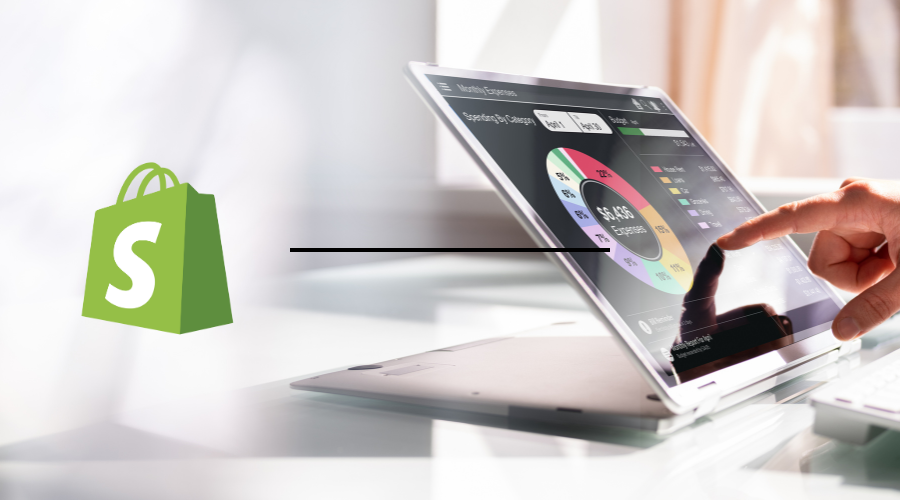Having a strong and user-friendly online presence is vital for businesses to succeed in today’s constantly changing digital market. Due to the e-commerce industry’s explosive expansion, Shopify has become a popular platform for small and large enterprises to launch and operate their online stores. However, what sets successful Shopify stores apart is the ability to enhance and customize their functionality through the development of tailored applications. In this comprehensive guide, we will delve into the world of Shopify app development, exploring the intricacies, best practices, and tools necessary to create powerful and feature-rich apps that seamlessly integrate with the Shopify ecosystem.
Whether you are a seasoned developer or a business owner looking to expand your store’s capabilities, this article will provide you with the knowledge and insights to navigate the exciting realm of Shopify app development.
How to Develop a Shopify App
Shopify has become a well-known platform in the e-commerce industry for helping companies easily develop and run their online storefronts. The strong and adaptable ecosystem of apps that Shopify has created is one of the main drivers of its success. A Shopify app is a piece of software created to expand the functionality of a Shopify store, enabling retailers to enhance and customise their online stores. The four most crucial phases to creating a Shopify app from scratch are as follows:
1. Plan in advance
Planning ahead is essential to a smooth Shopify app development process. Start by outlining your app’s goals and purpose in detail. Outline the features and functions needed to satisfy the needs of your target audience by identifying the precise pain issues you want to address for them. To understand the demand for apps that are comparable to yours and to find any holes you can fill, conduct a thorough market analysis. You may improve your app idea and develop a distinctive selling proposition with the assistance of our research.
Additionally, define your target audience and consider their preferences and behaviours when designing and developing your app. A well-thought-out plan serves as a roadmap and ensures you stay focused and aligned with your goals throughout the development process.
2. Designing the app using Polaris
Shopify offers a design system called Polaris, which provides a comprehensive set of guidelines, components, and resources to help you create a visually appealing and user-friendly app interface. By leveraging Polaris, you can ensure consistency with the Shopify ecosystem and deliver a seamless user experience. Start by familiarizing yourself with the design principles outlined in the Polaris documentation.
Use the provided components, such as buttons, navigation menus, and form fields, to design your app’s interface. Pay attention to the visual hierarchy, typography, and colour schemes to create a cohesive and aesthetically pleasing design. Polaris also provides design assets and templates that can expedite the design process and maintain visual consistency across your app.
3. Developing the app

It’s time to start creating your Shopify app once you have a sound strategy and design in place. Shopify provides a selection of information and development tools to make the process easier. Either a personalised app or a public app can be built, depending on your needs. While custom apps are made to meet the needs of particular retailers, public applications are accessible to all Shopify shops.
Select a programming language and development framework that you are comfortable with and that aligns with Shopify’s development environment. Utilize Shopify’s APIs and SDKs to access and modify store data, manage orders, and add custom functionalities to your app. Leverage webhooks and GraphQL to retrieve real-time data and provide seamless integration with the Shopify platform. Ensure your code follows best practices, maintainability, and scalability to support future updates and enhancements.
4. Testing the app
Thorough testing is essential to ensure your Shopify app functions reliably and provides a seamless user experience. Start with unit testing to test individual components and functions of your app. Integration testing is crucial to verify that different modules of your app work harmoniously together. Before releasing your app, user acceptance testing enables you to get insightful input from actual users.
To ensure compatibility, test your app on a variety of hardware, browsers, and operating systems. Pay attention to performance, responsiveness, and usability. Identify and fix any bugs or glitches that arise during testing. Consider using automated testing frameworks and tools to streamline the testing process and ensure consistent quality. Engage beta testers to provide feedback and identify any potential issues that need addressing before releasing your app to the public.
5. Submitting and reviewing the app
It’s time to submit your app to the Shopify App Store for review after it has been extensively tested and improved. Before submitting, confirm that your app complies with all of Shopify’s rules and specifications. To prevent needless delays or rejections, carefully read the Shopify-provided documentation and recommendations.
The review process typically involves an evaluation of your app’s functionality, security, and compliance with Shopify’s policies. Shopify may also review your app’s code and conduct security scans. Respond promptly to any feedback or queries from the Shopify review team and make necessary adjustments to meet the guidelines. Be prepared to address any issues raised during the review process to ensure your app meets the necessary standards for publication.
6. Promoting the app
After your app successfully passes the review process and gets listed in the Shopify App Store, it’s time to promote it to your target audience. Create a marketing plan to spread the word about and spark interest in your software. To reach potential consumers, make use of a variety of platforms, including social media, content marketing, email campaigns, and influencer collaborations.
To increase the reputation and draw in more customers, promote user reviews and ratings. Based on user input and changing market demands, update and improve your software on a regular basis. In the following session, the promotion procedure will be detailed in more detail.
How to learn Shopify app development

Shopify app development opens up a world of opportunities to create powerful and customized e-commerce solutions. Whether you’re a developer looking to expand your skill set or a business owner aiming to enhance your online store’s functionality, mastering Shopify app development requires a systematic approach. Here’s a roadmap to help you embark on your journey:
1. Familiarize Yourself with Shopify
Learn the Shopify platform thoroughly, to begin with. Explore the features, functionalities, and capabilities that Shopify offers to merchants. Take advantage of Shopify’s extensive documentation, tutorials, and resources to get acquainted with the platform’s architecture, APIs, and development environment. Familiarize yourself with Shopify’s Liquid templating language, which is used to customize the storefront.
2. Learn Web Development Fundamentals
It’s crucial to have a solid background in web programming before becoming adept in Shopify app development. Learn about HTML, CSS, and JavaScript, the fundamental components of web development. Learn how these languages interact to produce dynamic, engaging web experiences. To ensure that your apps adjust to diverse screen sizes and devices, learn about responsive design concepts. Learn about front-end frameworks and libraries like React, Angular, and Vue.js since they can improve the way you create apps.
3. Explore Shopify App Development Documentation
Dive into Shopify’s comprehensive app development documentation. Start with the App Development Overview, which provides an introduction to the app ecosystem, terminology, and concepts. Recognise the various app kinds you can create, including sales channel applications, bespoke apps, and public apps. Explore the available APIs, SDKs, and tools that Shopify provides for app development. Study the authentication process, how to access store data, and how to integrate with various Shopify features and functionalities.
4. Hands-On Experience with Sample Projects
Put your knowledge into practice by building small, sample Shopify apps. Start with simple projects that involve basic features and gradually progress to more complex apps. Develop apps that manipulate product data, manage inventory, or enhance the checkout process. Utilize Shopify’s development environment, such as the Shopify CLI (Command Line Interface), to streamline your development workflow. Experiment with different functionalities and explore the possibilities of extending Shopify’s capabilities through your apps.
5. Engage with the Shopify Developer Community
Join Shopify’s developer community to connect with fellow developers, share experiences, and learn from their expertise. Participate in forums, online communities, and social media groups dedicated to Shopify app development. Participate in discussions, elicit information, and share your expertise. Contribute to the creation of Shopify-related tools and libraries by working together on open-source projects. Attend Shopify meetups, conferences, or webinars to stay updated on the latest trends and advancements in the ecosystem.
6. Continuous Learning and Iteration
Shopify app development is a constantly evolving field, so it’s essential to stay updated with the latest technologies and best practices. Keep an eye on Shopify’s official blog and other reputable industry publications for news, updates, and tutorials. Explore advanced topics such as app optimization, security best practices, and performance enhancements. Continuously refine your skills and revisit your existing apps to incorporate new features or improvements based on user feedback and changing market needs.
How To Promote A Shopify App

1. Recruit influencers
The use of influencer marketing to advertise goods and services, especially Shopify apps, has grown in popularity. Find influencers in your niche who are well-known and have a loyal following among your target market. Contact them and suggest a partnership so they may promote your software to their audience. Give them access to your app, or give their followers special offers and discounts. Influencers can create engaging content such as reviews, tutorials, or sponsored posts that highlight the benefits and features of your app. Their endorsement can build trust, generate buzz, and drive user engagement.
2. Join forces with other apps
Collaborating with other Shopify apps that complement your offering can be a win-win strategy. Look for applications that have comparable audience targets but different functionalities. Explore partnership opportunities to cross-promote each other’s apps. This can include joint marketing campaigns, sharing resources, or featuring each other’s apps on your websites and social media platforms. By leveraging each other’s user base and networks, you can expand your app’s reach and gain exposure to a wider audience. Additionally, consider integrating your app with other popular apps to provide enhanced value and create a seamless user experience.
3. Build a blog
Creating a blog focused on topics related to your app and the needs of your target audience is an effective content marketing strategy. Develop high-quality blog posts that address pain points, provide valuable insights, and offer solutions relevant to your app’s features. By completing keyword research and naturally inserting pertinent keywords throughout your articles, you may optimise the content of your blog for search engines. This will raise the likelihood that your blog will show up in search engine results and enhance natural traffic to your website. Encourage readers to follow your blog to receive frequent updates, and encourage them to share your content on social media to reach a wider audience.
4. Boost your advertising
Your Shopify app’s visibility and adoption can be increased by investing in focused advertising efforts. Strong targeting capabilities are available on platforms like Google Ads, Facebook Ads, and Instagram Ads to reach your target market. Create ads that are appealing and clearly express the unique value your app offers. Use compelling language and eye-catching graphics to draw users in. Use demographic and interest-based targeting to make sure the right people see your adverts. To enhance your ads’ effectiveness and boost conversion rates, use A/B tests. Retargeting campaigns are another option to re-engage consumers who have expressed interest in your app but haven’t yet downloaded it.
Remember that promoting a Shopify app is an ongoing process. Continuously monitor the performance of your promotional activities, analyze user feedback, and adapt your strategies accordingly. Stay proactive in exploring new marketing channels, partnerships, and growth opportunities to maximize your app’s reach and adoption in the competitive e-commerce landscape.
What skills should a Shopify app developer have?

A Shopify app developer should possess a combination of technical skills, problem-solving abilities, and a deep understanding of the Shopify platform. The following are some crucial abilities need for developing Shopify apps:
- Proficiency in Web Development: It is crucial to have a solid understanding of web development languages like HTML, CSS, and JavaScript. Understanding how these languages interact and work together is crucial for building user interfaces and enhancing the functionality of Shopify apps.
- Familiarity with Shopify APIs: A developer should be well-versed in working with Shopify’s APIs and SDKs. This includes understanding how to interact with the Shopify platform, retrieve and manipulate store data, manage orders and inventory, and integrate custom functionalities into Shopify apps.
- Expertise in Shopify Liquid: Shopify Liquid is the templating language used to customize the appearance of Shopify storefronts. A developer should be proficient in using Liquid to modify the presentation layer of apps, create dynamic templates, and integrate custom features seamlessly.
- Experience with Front-End Frameworks: Familiarity with popular front-end frameworks and libraries like React, Angular, or Vue.js can greatly enhance the development process. These frameworks provide efficient ways to build interactive and responsive user interfaces for Shopify apps.
- Knowledge of Back-End Development: Understanding back-end technologies and concepts is crucial for building robust and scalable Shopify apps. This includes proficiency in programming languages like Ruby, Python, or PHP, as well as experience with databases, server-side scripting, and handling server requests and responses.
- Collaboration and Communication Skills: Shopify app developers often work as part of a team, collaborating with designers, project managers, and other developers. Good communication skills are vital for effective collaboration, understanding project requirements, and translating them into functional app features.
Bottom Line
Mastering Shopify app development requires a combination of technical skills, problem-solving abilities, and a deep understanding of the Shopify platform. By acquiring proficiency in web development languages such as HTML, CSS, and JavaScript, and gaining familiarity with Shopify’s APIs and Liquid templating language, developers can build powerful and customized apps that enhance the functionality of Shopify stores.
As the e-commerce industry continues to grow, Shopify app developers play a crucial role in providing innovative solutions that enable merchants to succeed in a competitive market. With the right skill set and a commitment to continuous learning, developers can unlock a world of possibilities and contribute to the ever-expanding Shopify app ecosystem.
By embarking on a journey to learn and master Shopify app development, developers can open doors to new opportunities, expand their skill set, and create impactful solutions that empower businesses to thrive in the digital realm. So, whether you are a seasoned developer or just starting out, investing time and effort in learning Shopify app development can be a rewarding and fulfilling path to follow.

